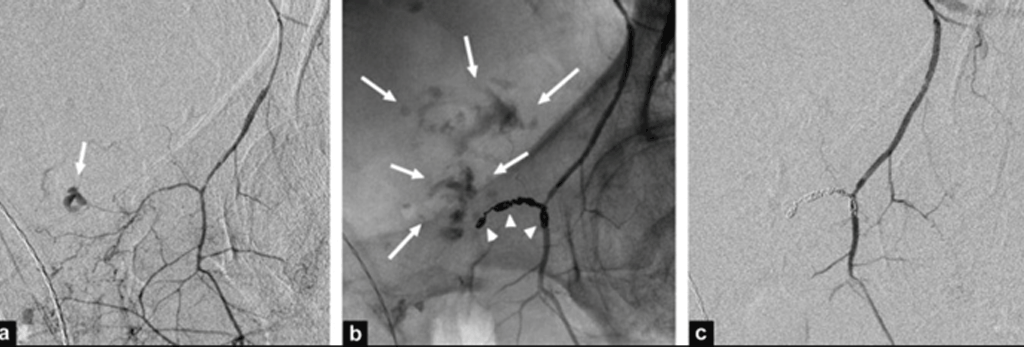EMBOLISATION FOR TRAUMA
Patient Education Material
Post-traumatic bleeding embolisation is performed to stop bleeding caused by traumatic injuries. The procedure uses materials to block the affected vessel and so stops the bleeding. Accidents can result in massive organ damage with subsequent life-threatening bleeding. If a patient is bleeding severely and this cannot be controlled by first-line treatment options, this minimally invasive procedure may stop the bleeding quickly and without the need to perform open surgery.

The procedure aims to stop blood flowing into the haemorrhaging vessels whilst preserving blood flow to the surrounding vessels and organs.
The interventional radiologist will insert a 2-3 mm tube into a blood vessel in your groin and will guide the tube under image guidance to the bleeding vessel or vessels. They will then insert small resin particles (microparticles), glue or small metal spirals (coils) into the bleeding vessel or vessels. This causes the vessel or vessels to become blocked and so stops the bleeding.
There are two main reasons why it is important to treat post-traumatic bleeding. If too much blood is lost, the patient may go into shock, which is life-threatening. It is also possible for large bruises to form, which could compress other organs or muscles.
Kindly contact:
- One PKLI Avenue, DHA, Phase-6, Lahore, Pakistan.
- info@pkli.org.pk
- +92 42 111 117 554

